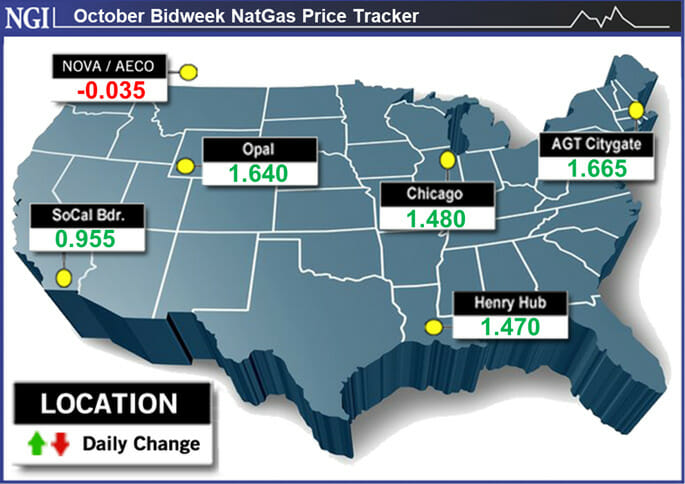Markets | E&P | Infrastructure | LNG | Natural Gas Prices | NGI All News Access
October Natural Gas Bidweek Prices Spike Amid Global Supply Trouble, Potential for Winter Crisis
© 2024 Natural Gas Intelligence. All rights reserved.
ISSN © 1532-1258 | ISSN © 2577-9877 |



